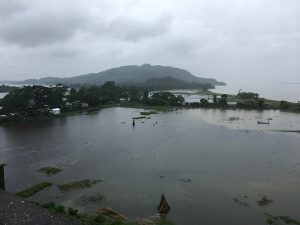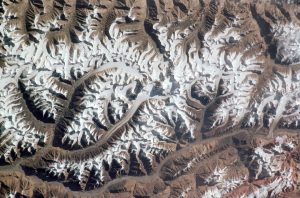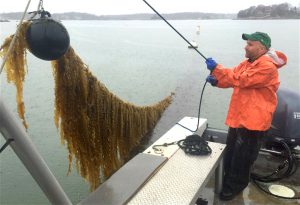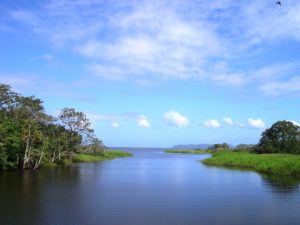The East Kolkata Wetlands, a Ramsar site and model for the natural treatment of urban wastewater, are under threat — and the West Bengal government is alleged to be the abettor in chief.
Activists say the state government is “hell bent on encroaching on the wetland area”, despite it being under the protections of a standing judicial verdict, obligations under Ramsar’s international protocol, and the national government’s 2010 Wetlands Rules.
But in the last few months, numerous construction projects — said to be in the public and environmental interest — have been proposed within the wetland area, and the state’s environment minister Sovan Chatterjee seems only too keen to push them through. Created in 2006 to conserve the wetlands area, Chatterjee took charge of the East Kolkata Wetlands Management Authority (EKWMA) in February, taking over the mantle from the Chief Secretary of State by modifying the EKWMA act in assembly.
Nothing unofficial about violation
In a meeting on July 14, the first of the reconstituted authority chaired by Chatterjee, the newly constituted EKWMA committee made a series of decisions which, environmentalists allege, have formalised encroachment within the wetlands. Minutes of the meeting, seen by thethirdpole.net, show that several governmental projects were cleared “in principle”.
The most contentious of them is a proposed five kilometre-long flyover road through the core of the wetlands, connecting the E M Bypass with New Town. The West Bengal Housing Infrastructure Development Corporation (WBHIDCO) is set to build the project, which will lead to the construction of 146 piers within eight large water bodies. It is understood that the project has been cleared without a valid Environment Impact Assessment (EIA) being done.
Two other projects — an ecotourism proposal named the East Kolkata Wetland Park and a center to highlight local agriculture – were also approved conceptually, although detailed project reports are yet to be prepared.
Read more: Greed, apathy destroying east Kolkata wetlands
According to sources, Chatterjee, who is also the mayor of the Kolkata Municipal Corporation, spoke in the meeting about the need to carve out part of the wetlands to accommodate the dumping of solid waste from Kolkata city; a demand he has been making in public since assuming office.
“There was a lack of unanimity about the approval of projects in the meeting,” observed Dhrubojyoti Ghosh, an ecological engineer and an expert member of the wetlands committee. Ghosh hinted that the government is pushing the decisions unilaterally, using the committee as a proxy.
“There is nothing in the public domain to justify the urgent need to build a flyover by filling up water bodies and impacting the livelihoods of thousands of people there, more so because the wetland is critical to Kolkata’s survival,” said Ghosh. Kalyan Rudra, another expert member and chairman of the state pollution control board, which reports to the environment department, refused to comment.
Minister Chatterjee confirmed to thethirdpole.net that the proposal for the flyover was cleared in the meeting. “We will have to protect the wetlands but we also need to think about development,” said Chatterjee when asked why he is so keen to undertake projects within the wetlands.
Read more: Real estate chokes Kolkata wetlands
Apart from these infrastructure projects, the WBHIDCO has started building at least two roads through the wetlands; one connecting Sector V with the newly created Sector VI at Bantala at the eastern fringe of the protected wetlands, and another off Sector V through a large water body.
“The environment minister, the chairman of the wetland authority, the housing minister and the mayor of Kolkata is the same person,” said Naba Dutta, an environmental activist and secretary of the environmental platform Sabuj Mancha. ”It’s impossible to stop him once he is hell-bent on encroaching the wetland area. It’s no coincidence that a significant number of projects have been proposed by the Kolkata Municipal Corporation.” Dutta also alleges that the new wetlands committee has been so formed to be full of government officials or politicians close to the ruling party to push government agendas in the wetlands.
Private land grabbers also on a roll
The illegal conversion of wetland areas by land mafias has increased significantly over the last year, since the present government assumed power. The East Kolkata Wetlands Management authority has itself lodged 57 complaints since June 2016 – almost double the average number of annual complaints lodged by the authority since 2006. Most of the complaints registered are from areas close to the Salt Lake Rajarhat area or off the E M Bypass — the new urban sprawls in the city — and are about unauthorised constructions on agricultural land or wetlands, or filling in water bodies. The authority lodged the complaints after receiving them from people or NGOs working in the area.
“We fear there will be more violations as recently the newly constituted authority committee has allowed the Meghnath Saha Institute of Technology to procure land outside the wetland area and turn it into a water body,” said one activist. “This is actually a u-turn on the authority’s earlier decision refusing such legitmisation. Similarly, the new committee has also reversed many earlier committee strictures against illegal violations.”
Ghosh agreed: “Recently the violations have reached a crescendo as buildings are being constructed within the East Calcutta Wetlands with unmatched rapidity, and land is being sold to buyers.”
Read more: Kolkata, a water-rich city turning water-poor
Minister Chatterjee claimed, however, that his department will not allow a single water body to be “filled in” within the wetlands, and that he “will not spare people” even from his own party in the case of water bodies being filled in.
Environmentalists say that even the provisions of the Ramsar bureau have been violated by this recent spate of projects. “A few months ago when Lew Young, a Ramsar adviser, came to Kolkata he categorically said that the preparation of a holistic wetlands management plan through widespread consultation is the priority,” said Ghosh. “Unfortunately, all the projects are now pushed in an ad-hoc manner without any management plan. In this way, the wetlands may be blacklisted, as happened in the case of Chilika lake a few years ago.”
A senior official in the environment department says that even the provisions in the 2010 Wetlands Rules have been blatantly flouted: “The rules clearly state that any construction of a permanent nature, except for boat jetties, within 50 metres of the wetlands require clearance from Delhi. In the case of the proposed flyover, the construction will come right into the wetlands and no permission is planned to be sought.”
![<p>Wastewater is released into the Kolkata wetlands at the Bantala Lock Gate [image by Soumya Sarkar]</p>](https://dialogue.earth/content/uploads/2016/07/2.-Wastewater-is-released-into-the-Kolkata-wetlands-at-the-Bantala-Lock-Gate.-Photo-by-Soumya-Sarkar.jpg)








